 Everyone knows that the Eastern Conference is nowhere near as good as the Western Conference.
Everyone knows that the Eastern Conference is nowhere near as good as the Western Conference. 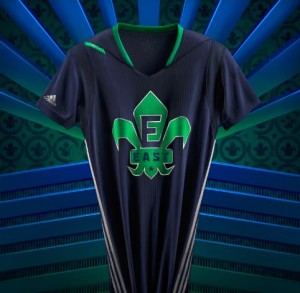
But that doesn’t mean that the first round of the East playoffs won’t be compelling. As everyone knows, all you need is one road team to win to make a series interesting.
Can the top-seeded Atlanta Hawks rediscover their rhythm? Did the Boston Celtics build confidence with two late-season wins over Cleveland? Is Chicago’s Derrick Rose returning to form or just an accident waiting to happen again?
Do the Milwaukee Bucks know they are too young to win? Are the Toronto Raptors ever going to play defense? And do the Brooklyn Nets even want to be here?
Below are snapshot previews of each first-round series in the East, breaking down each team’s biggest strength and weakness and the entire injury picture.
 (1) ATLANTA HAWKS VS. (8) BROOKLYN NETS
(1) ATLANTA HAWKS VS. (8) BROOKLYN NETS 
Hawks
Trending: Flat, perhaps even down by their standards. The Hawks are 11-10 since March 6, when they opened an 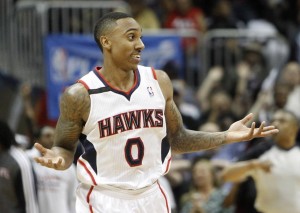 insurmountable lead in the East. In that span, Atlanta has two three-game skids after having none prior.
insurmountable lead in the East. In that span, Atlanta has two three-game skids after having none prior.
Biggest Advantage: Their ball movement, player movement and unselfishness, which will make the plodding Nets look like they are stuck in mud. Gs Jeff Teague and Dennis Schroder should get to the rim at will.
Biggest Disadvantage: The backboards. The Hawks are smallish at the two big spots with C Al Horford and F Paul Millsap and were 27th in rebound percentage and differential. They will have to gang-rebound to prevent second chances by the Nets.
Injuries: G-F Thabo Sefolosha (NYPD) is out. Millsap has returned from a shoulder injury but isn’t 100 percent. F Mike Scott has a bruised back. Everyone else got plenty of rest down the stretch.
Nets
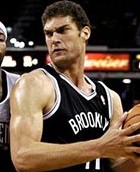 Trending: Up, slightly. Brooklyn won 13 of its last 19 but still had to back into the playoffs after a pair of blowout losses this week, which illustrated its willingness to quit.
Trending: Up, slightly. Brooklyn won 13 of its last 19 but still had to back into the playoffs after a pair of blowout losses this week, which illustrated its willingness to quit.
Biggest Advantage: C Brook Lopez. The potential free agent has been on an unreal salary drive by averaging 23.7 points, 9.4 rebounds and 2.3 blocks in his last 16 games. Playing through him will allow the Nets to control tempo, which they must do.
Biggest Disadvantage: Defensive rotations. Find me a usable five-player unit on this roster of guys who can help and recover without looking like they are on skates.
Injuries: G Alan Anderson may be out with a sprained ankle. G Deron Williams has 40-year-old ankles. F Thaddeus Young wrenched his back over the weekend but appears OK. It is unlikely but possible that F Mirza Teletovic (blood clots) could return.
 (2) CLEVELAND CAVALIERS VS. (7) BOSTON CELTICS
(2) CLEVELAND CAVALIERS VS. (7) BOSTON CELTICS
Cavaliers
Trending: Up. Since Jan. 13, Cleveland is 34-9 overall and 19-1 at home. The home loss is to the Celtics, but they were resting  players.
players.
Biggest Advantage: In F LeBron James and G Kyrie Irving, the Cavs have two terrific finishers that can break down any defense. They are dangerous in transition and almost impossible to defend for the duration of the shot clock.
Biggest Disadvantage: The Cavs are in the bottom third in opponents’ shooting and blocks. They are vulnerable at protecting the rim when C Timofey Mozgov is not on the floor.
Injuries: Irving aggravated a hip injury Monday. F Kevin Love had back issues earlier this month. G Iman Shumpert has a quad injury. F Shawn Marion had a hip injury earlier this season that bears watching.
Celtics
 Trending: Up. Boston is 24-12 since Feb. 1 and has been playing de facto postseason games for about three weeks.
Trending: Up. Boston is 24-12 since Feb. 1 and has been playing de facto postseason games for about three weeks.
Biggest Advantage: They are playing entirely with house money. The Celtics don’t know they’re not supposed to be here and are gonna have fun until someone tells them to leave.
Biggest Disadvantage: Late in shot clocks, late in games, Boston has one breakdown option – G Isaiah Thomas, who has his shot blocked at the rim as often as he finishes.
Injuries: The tiny Thomas missed two weeks in March with a bruised back; expect to see him sent to the floor by the Cavs. C Jared Sullinger was supposed to be out for the season with a foot fracture and is one bad step away from the sidelines. F Jae Crowder has a sore ankle. G Avery Bradley bruised his quad Tuesday.
 (3) CHICAGO BULLS VS. (6) MILWAUKEE BUCKS
(3) CHICAGO BULLS VS. (6) MILWAUKEE BUCKS 
Bulls
Trending: Up. The Bulls have won four in a row and 10 of 14 to pull away from Toronto and Washington and claim the third 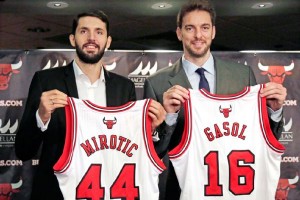 seed. And they did most of that without G Derrick Rose.
seed. And they did most of that without G Derrick Rose.
Biggest Advantage: Bigs as playmakers. In C Joakim Noah, F Pau Gasol and rookie F Nikola Mirotic, Chicago has three frontcourt players who are almost as dangerous creating offense for others as they are for themselves and can exploit overloaded defenses or poor rotations.
Biggest Disadvantage: The Bulls don’t get easy baskets. They were 22nd with 11 fast break points during the season, and the pace slows in the playoffs. If Rose isn’t right, their offense could sputter at times.
Injuries: Rose left the season finale with a sore left knee after returning five games ago from surgery on his right knee. His wind and rhythm are not back. G Jimmy Butler has had shoulder and elbow issues and now has a calf injury. Noah has a hamstring ailment. G Kirk Hinrich has a knee injury. Fs Taj Gibson and Mike Dunleavy have missed significant time this season. It’s almost easier to list the healthy rotation players.
Bucks
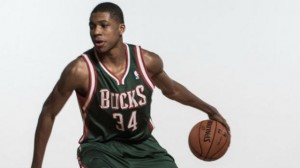 Trending: Slightly up. After a terrible March, the Bucks went 5-3 in April.
Trending: Slightly up. After a terrible March, the Bucks went 5-3 in April.
Biggest Advantage: Size, length and athleticism. Milwaukee has long, quick players at almost every position, giving it matchup edges on offense and the ability to switch 1 through 5 on defense, which is crucial in late-game situations.
Biggest Disadvantage: Inexperience. The Bucks’ entire roster has 121 games of playoff experience, or just 16 more than Gasol has by himself. Fs Giannis Antetokounmpo and Khris Middleton, their best go-to guys, are in their first postseason.
Injuries: G Jerryd Bayless has a sore neck. Otherwise, they are in pretty good shape.
 (4) TORONTO RAPTORS VS. (5) WASHINGTON WIZARDS
(4) TORONTO RAPTORS VS. (5) WASHINGTON WIZARDS 
Raptors
Trending: Down. They may have won four of their last five, but the Raptors are 12-16 since Feb. 21 and have allowed at least 110 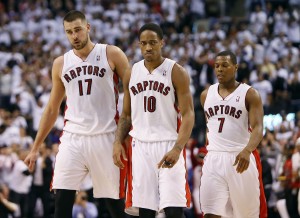 points seven times in that span.
points seven times in that span.
Biggest Advantage: Points from the arc. Toronto shoots way more threes than Washington and has five rotation players who make between one and two per game. The Raptors could really extend the slowish defense of the Wizards.
Biggest Disadvantage: Defense. Among playoff teams, only Boston and Dallas surrender more points than Toronto. And the Raptors are worst among playoff teams in allowing opponents to shoot nearly 46 percent.
Injuries: G DeMar DeRozan has a groin injury. F-C Amir Johnson and G-F Terrence Ross are bothered by sore ankles. G Kyle Lowry has been dealing with back issues since the All-Star break.
Wizards
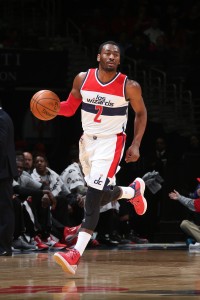 Trending: Down. The Wizards dropped three of their last four and are 6-8 since mid-March. They are nowhere near the team they were before New Year’s Day.
Trending: Down. The Wizards dropped three of their last four and are 6-8 since mid-March. They are nowhere near the team they were before New Year’s Day.
Biggest Advantage: Size. Yes, they almost always have a speed edge with G John Wall. But in this series, the ability of C Marcin Gortat and F Nene to overpower their more slender foes and score is huge.
Biggest Disadvantage: Has Washington moved into the analytics age? Among playoff teams, only Memphis attempts less threes than the Wizards, who are actually ninth overall in arc shooting at .360. And 23 percent of Washington’s shots this season were long twos, the most of any playoff team.
Injuries: G John Wall is coming off an ankle injury and is susceptible to migraines. G Bradley Beal is fragile and has been nursing a sore ankle for a while. Nene has shoulder, ankle and foot ailments. F Kris Humphries is coming off a groin injury. F Otto Porter sprained an ankle in the season finale.
Chris Bernucca is the managing editor of SheridanHoops.com. His columns appear Monday during the season. You can follow him on Twitter.